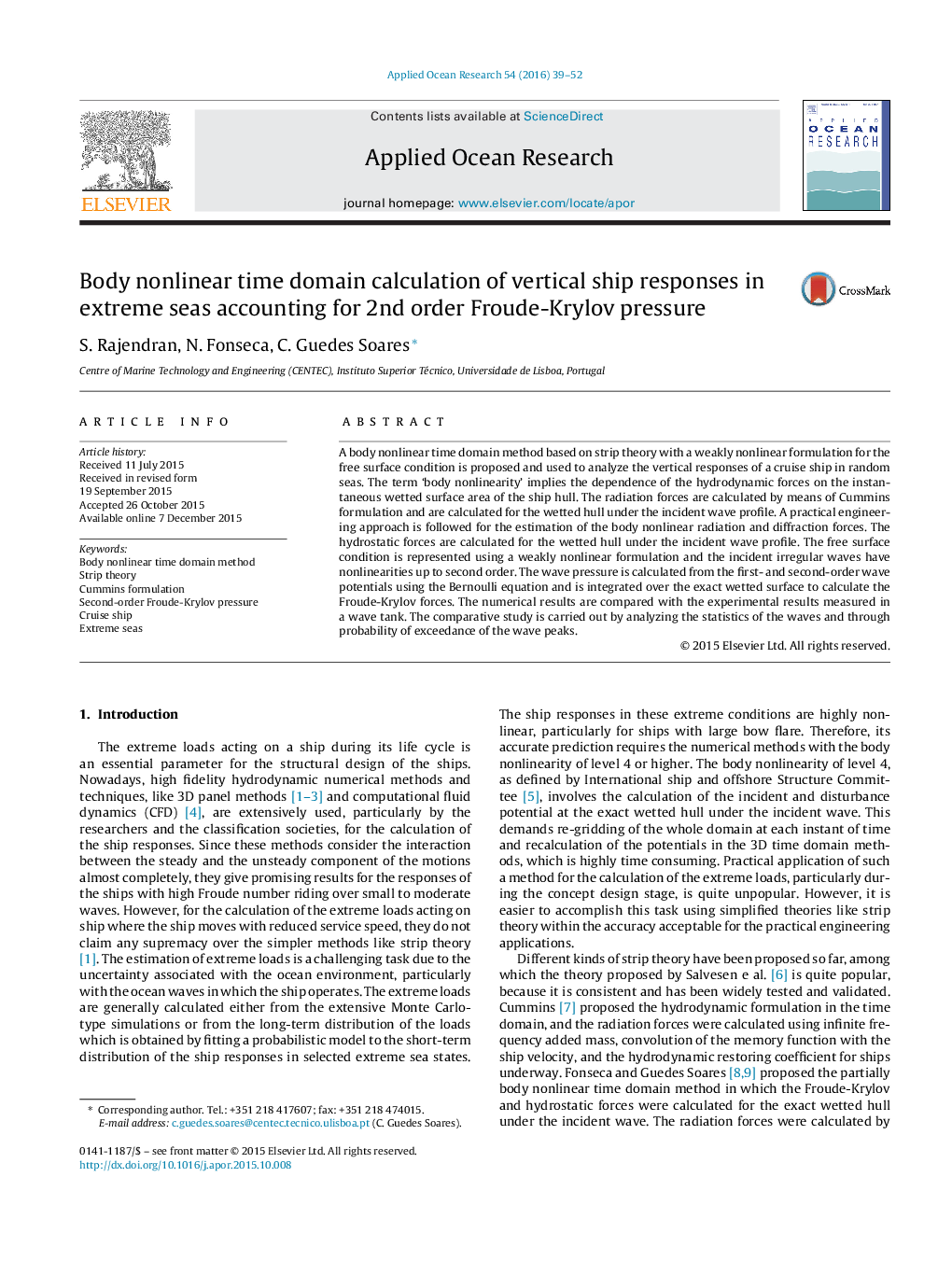| Article ID | Journal | Published Year | Pages | File Type |
|---|---|---|---|---|
| 1719862 | Applied Ocean Research | 2016 | 14 Pages |
•A body nonlinear time domain method based on strip theory with weakly nonlinear formulation for the free surface condition is proposed.•The hydrostatic forces are calculated for the actual wetted hull.•The free surface condition is represented using a weakly nonlinear formulation and the incident irregular waves have nonlinearities up to second order.•The numerical results are compared with the experimental results measured in a wave tank.
A body nonlinear time domain method based on strip theory with a weakly nonlinear formulation for the free surface condition is proposed and used to analyze the vertical responses of a cruise ship in random seas. The term ‘body nonlinearity’ implies the dependence of the hydrodynamic forces on the instantaneous wetted surface area of the ship hull. The radiation forces are calculated by means of Cummins formulation and are calculated for the wetted hull under the incident wave profile. A practical engineering approach is followed for the estimation of the body nonlinear radiation and diffraction forces. The hydrostatic forces are calculated for the wetted hull under the incident wave profile. The free surface condition is represented using a weakly nonlinear formulation and the incident irregular waves have nonlinearities up to second order. The wave pressure is calculated from the first- and second-order wave potentials using the Bernoulli equation and is integrated over the exact wetted surface to calculate the Froude-Krylov forces. The numerical results are compared with the experimental results measured in a wave tank. The comparative study is carried out by analyzing the statistics of the waves and through probability of exceedance of the wave peaks.
